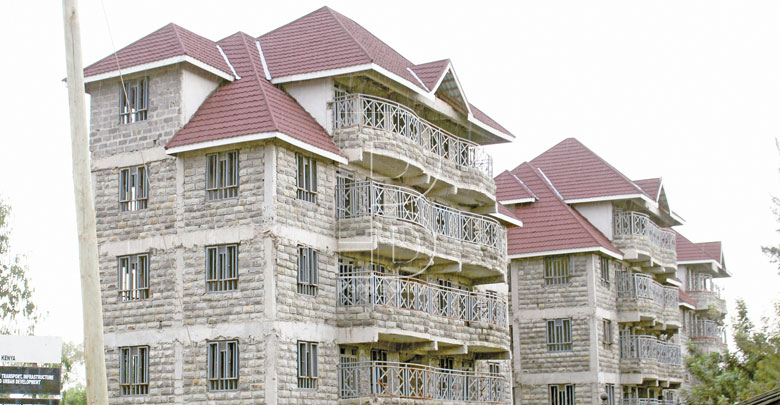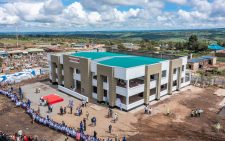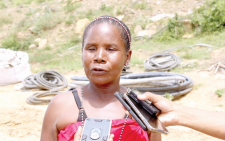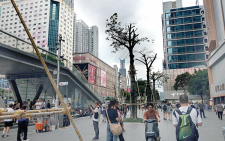Estate developments: When development landed around Kisumu airport

Kisumu is experiencing a renaissance in construction, with a boom in real estate developments.
The third largest city in Kenya boasts a rejuvenated real estate sector, with developments sprouting recently, especially in the outskirts of the Central Business District (CBD).
As a result, more investors have moved in to reap from the lucrative growth taking shape on the town’s outskirts. The upgrading of Kisumu Airport to an international hub has further given the city a lifeline in building and construction sector.
Elevation of the facility and increasing business has enticed property investors to the lakeside city, thus boosting its real estate growth.
Areas surrounding the airport have become prime targets for property developers and speculators are trooping in to purchase the most favoured spots. As a result, areas neighbouring the airport that were some years ago covered by shrubs and isolated shanty homesteads are now being transformed into gated communities with modern residential houses.
Kogony area approximately four kilometres from Kisumu CBD is the most popular, primed to turn around the housing deficit, particularly for middle-class dwellers. The middle-income housing development lies adjacent to Riat hillside, one of the expensive suburbs in Kisumu town.
The maisonettes are also expected to add to the growing developments taking shape in the lakeside city recently, mostly on the outskirts, which has become a potential zone for further growth. Furthermore, the new developments around the airport encompass few commercial buildings.
Brian Kimwatan, research assistant at Cytonn Real Estate says opening up of the area has created investment opportunity for potential developers who are gradually coming up with new projects.
“Infrastructural developments within the locality in the recent times such as upgrading of the airport to international status and construction of roads such as the Kisumu–Busia highway has made the area viable for further growth,” he says.
Infrastructure developments
Overall improvement in infrastructure over the last few years has meant increased confidence among individual and institutional investors who are increasingly being attracted to the place.
These include connections to murram roads and main water connection from Kisumu Water and Sewerage Company (Kiwasco).
“Most buyers consider the proximity of the property they want to buy to accessibility to roads and other transport channels,” says Kimwatan. The new developments in the town’s peripheries, he says, is good news as it will meet some of the increased demand for affordable housing to accommodate the growing workforce.
“The housing sector in Kisumu is still nascent. Most large residential developments for rent are located in suburbs such as Milimani, Lolwe, Migosi and Mamboleo. We therefore expect to see developers shifting focus to affordable housing in order to fill the market gap,” explains Kimwatan.
Shopping malls
He regrets that despite increased development in the area following devolution and opening up of Kisumu for development, some sectors such as residential and offices remain undersupplied.
Bedvin Investments managing partner Benard Odhiambo says the area presents investors with a mixed-used development opportunity, both in form of residential and commercial apartments. The vicinity also provides a welcome alternative to the high-end houses of neighbouring Riat hills, especially for the middle class dwellers.
Odhiambo urges property developers targeting the site to prioritise single and double bedroomed apartments and bed-sitters, which are now a preference for most inhabitants.
“The area offers a mixed fortune for developers in terms of residential apartments, especially for the middle income earners due to its proximity to the CBD. There is also an opportunity for light industrial development with focus on warehouses,” says Odhiambo.
He says furnished apartment is another viable investment in the area investors can tap into, adding that such facilities could be used for hospitality purposes by guests journeying through the airport.
“Developers keen on investing in Kisumu should capitalise on the diverse opportunities around the airport to come up with real-time projects that will spur the sector’s growth,” he says.
Moreover, developers should also think of putting up malls, an area whose potentiality remains untapped in the locality. “Such new developments will have far reaching contributions for Kisumu town, especially for the affordable housing situation,” he adds.
Old estates
According to Cytonn’s 2018 survey report on the Kisumu Investment Opportunity, the real estate sector recorded average yields of 7.2 per cent, with the residential, commercial and retail sector recording 5.1 per cent, seven per cent and 9.4 per cent respectively in terms of comparative analysis with other major towns in the country.
On the residential sector, the report indicated that investment opportunities lie in apartments for rent in suburbs such as Milimani, Lolwe, Migosi and Mamboleo suburbs, which record an average rental yield of 5.5 per cent.
“Kisumu’s opportunity in the land sector lies in emerging residential zones like Riat hills driven by speculation and the market exodus from the congested town CBD,” Cytonn Managing Director Edwin Dande said in the report.
Old town estates such as Milimani, Migosi, Lolwe, Mamboleo, Tom Mboya and Riat Hills are mainly overcrowded with middle and high-class residential apartments.












